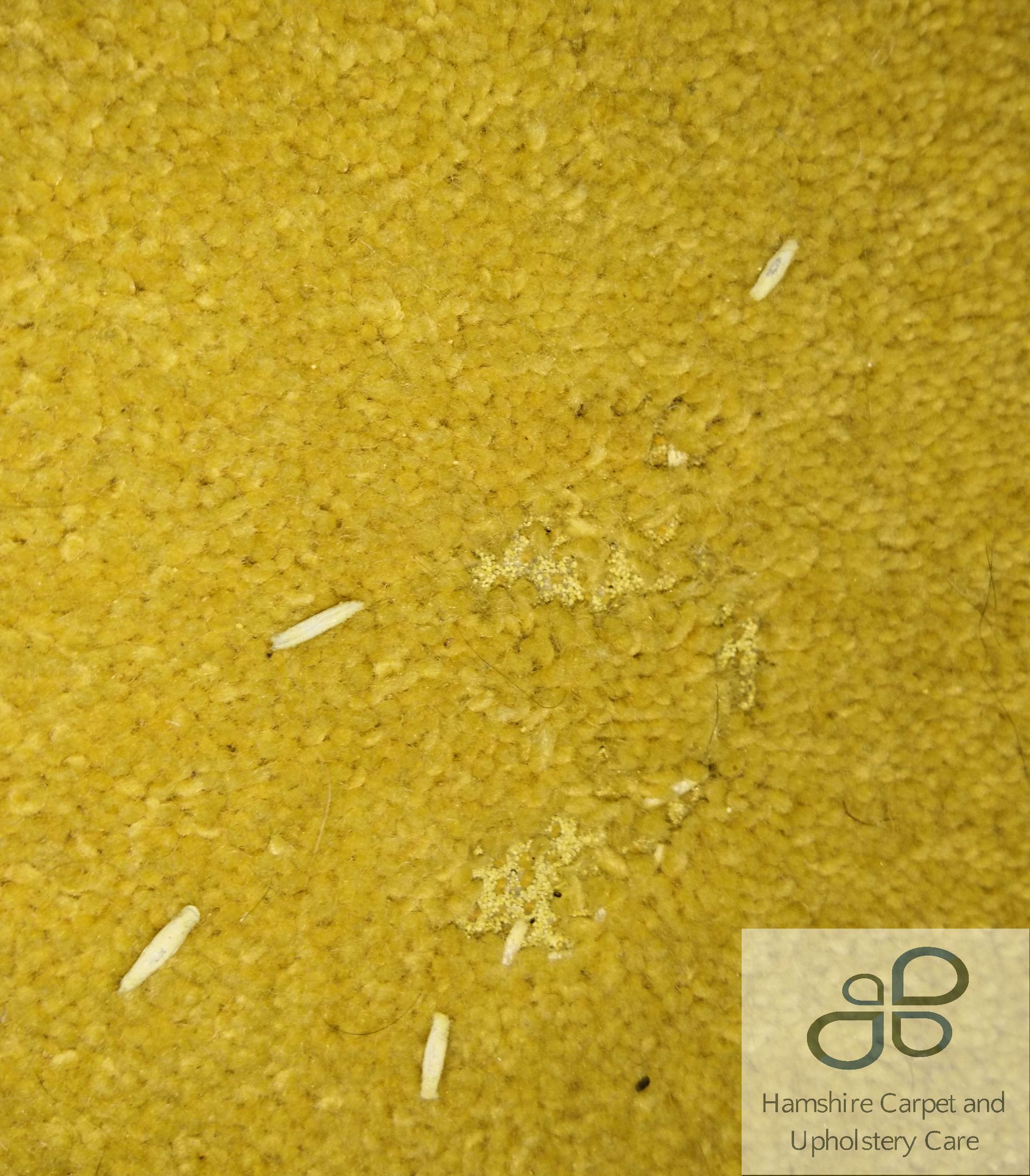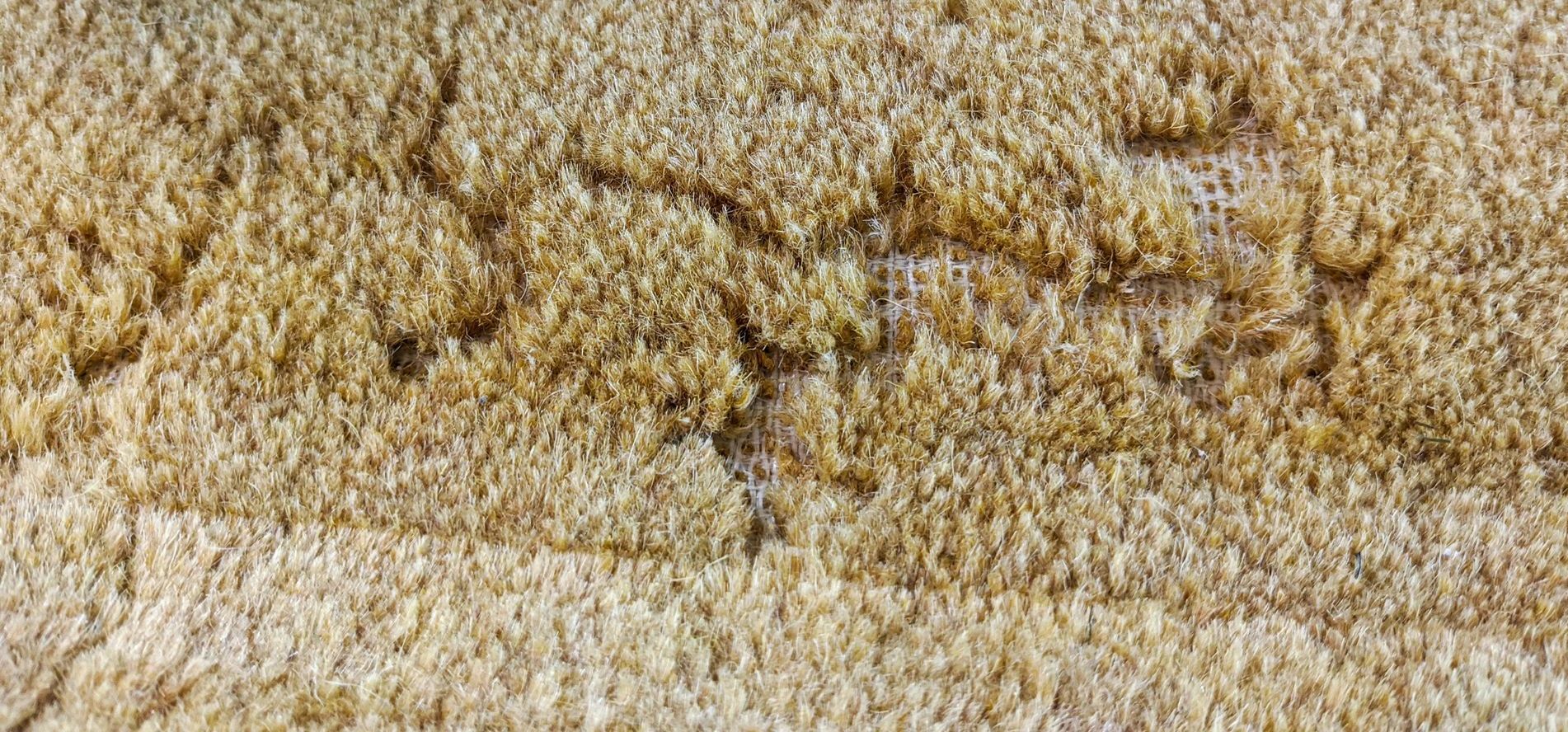Spotting Bald Patches? Discover If Carpet Moths Are the Culprit and What to Do Next
Moths in your carpets?

Have you noticed some mysterious bald patches appearing in your once-pristine carpet? Before you panic, it might be time to consider if carpet moths are the sneaky culprits behind this damage. These tiny invaders can cause significant harm by feasting on the fibres of your beloved floor coverings, leaving unsightly and uneven wear. In this blog post, we'll guide you through the tell-tale signs of a carpet moth infestation, provide expert advice on how to tackle the issue effectively, and share preventative measures to safeguard your carpets in the future. Let's delve into the world of carpet care and reclaim your cosy space with confidence!
Identifying Carpet Moth Damage
Recognizing the signs of carpet moth infestation is crucial for early detection and effective treatment. Let's explore the tell-tale indicators and how to distinguish them from other pest-related damages.
Signs of Infestation
Carpet moth damage often manifests as irregular bald patches or thinning areas in your carpet. These patches may appear suddenly and spread quickly if left untreated.
Look for small, cream-colored larvae or tiny moths fluttering near your carpet, especially in dark corners or under furniture. These pests are most active at night, so you might notice increased activity during evening hours.
Another sign is the presence of small, silken tubes or cases near the damaged areas. These are created by the larvae as they feed and grow. If you spot any of these indicators, it's time to take action to protect your carpet investment.
Differentiating from Other Pests
While carpet moths are common culprits, other pests can cause similar damage. Carpet beetles, for instance, also feed on carpet fibres but leave different signs.
Here's a quick comparison:
Pest Damage Pattern Other Signs
Carpet Moths Irregular bald patches Silken tubes, adult moths
Carpet Beetles Scattered bare spots Small, round beetles, shed skins
If you're unsure about the source of the damage, consider consulting a pest control professional. They can accurately identify the pest and recommend appropriate treatment options.
Remember, early identification is key to preventing extensive carpet damage and potential spread to other areas of your home.
Understanding Carpet Moths
To effectively combat carpet moths, it's essential to understand their behaviour and preferences. This knowledge will help you create an environment less hospitable to these destructive pests.
Life Cycle and Habits
Carpet moths, scientifically known as Trichophagia tapetzella, go through four stages in their life cycle: egg, larva, pupa, and adult. The larval stage is when most carpet damage occurs.
Adult female moths lay up to 100 eggs over their short lifespan. These eggs hatch into larvae within 4-10 days. The larval stage can last several months, during which they feed voraciously on carpet fibres.
Carpet moth larvae prefer dark, undisturbed areas. They're often found in corners, under furniture, or along baseboards. This habit makes regular cleaning and furniture movement crucial for prevention.
Why They Love Carpets
Carpet moths are attracted to natural fibres, particularly wool, which is rich in keratin - a protein they can digest. However, they're not picky eaters and will also consume synthetic fibres if natural options are scarce.
These pests thrive in environments that are:
- Warm and humid
- Dark and undisturbed
- Rich in food sources (natural fibres)
- Dirty or laden with organic matter
Understanding these preferences helps in creating an environment that's less attractive to carpet moths. Regular cleaning, proper ventilation, and strategic furniture placement can significantly reduce the risk of infestation.
Prevention and Management
Preventing carpet moth infestations is far easier and more cost-effective than treating an existing problem. Let's explore some effective cleaning techniques and professional services that can help keep your carpets moth-free.
Effective Cleaning Techniques
Regular and thorough cleaning is your first line of defence against carpet moths. Here are some proven techniques:
- Vacuum frequently, paying extra attention to corners and under furniture.
- Use a carpet shampoo or steam cleaner periodically to deep clean fibres.
- Employ natural repellents like lavender or cedar oil in your cleaning routine.
Remember, consistency is key. Even the most effective techniques won't work if applied sporadically. Set a regular cleaning schedule and stick to it for best results.
Professional Cleaning Services
While DIY methods are helpful, professional cleaning services offer a more thorough approach. These experts have specialised equipment and knowledge to:
- Perform deep cleaning that reaches the base of carpet fibres
- Apply professional-grade treatments to repel and eliminate moths
- Identify early signs of infestation that might be missed by untrained eyes
Consider scheduling professional cleaning at least once a year, or more frequently in high-risk areas. This investment can significantly extend the life of your carpets and prevent costly replacements due to moth damage.
DIY Solutions and When to Call Experts
For those who prefer a hands-on approach, there are several DIY solutions you can try. However, it's crucial to know when a problem has escalated beyond the scope of home remedies.
Home Remedies for Moth Control
Natural and cost-effective solutions can be effective for minor infestations. Here are some popular DIY methods:
- Vinegar solution: Mix equal parts water and white vinegar. Spray on affected areas to kill larvae and deter adults.
- Essential oils: Peppermint, lavender, or eucalyptus oils can repel moths. Add a few drops to your cleaning solution.
- Diatomaceous earth: Sprinkle this natural powder in infested areas. It dehydrates and kills moth larvae.
Remember, consistency is key with these methods. Apply regularly and in combination with thorough cleaning for best results.
"Prevention is always better than cure when it comes to carpet moths," says Sarah Johnson, a pest control expert. "Regular use of natural repellents can significantly reduce the risk of infestation."
Hiring a Cleaning Service
While DIY methods can be effective, sometimes professional intervention is necessary. Consider calling experts if:
- The infestation has spread to multiple rooms
- DIY methods haven't shown results after several weeks
- You're dealing with valuable or antique carpets
- You're unsure about the extent of the problem
Professional services offer comprehensive treatments, including targeted pesticides and follow-up inspections. They can also provide advice on preventing future infestations, making their expertise invaluable for long-term carpet protection.
Long-term Carpet Care Tips
Maintaining your carpets over the long term not only prevents moth infestations but also preserves their beauty and extends their lifespan. Let's explore some strategies to protect your investment and keep your carpets in top condition.
Protecting Your Investment
Your carpet is a significant investment in your home's comfort and aesthetics. Here are some tips to protect it:
- Use door mats at all entrances to reduce dirt tracked onto carpets.
- Consider implementing a 'no shoes' policy indoors to minimize wear and tear.
- Place protective pads under furniture legs to prevent crushing of carpet fibres.
For valuable or antique carpets, consider these additional measures:
- Use UV-blocking window treatments to prevent sun damage.
- Rotate rugs periodically to ensure even wear.
- Store unused carpets properly in airtight containers with moth repellents.
Regular Maintenance Strategies
Consistent care is key to long-term carpet health. Implement these strategies into your routine:
- Vacuum at least twice a week, more in high-traffic areas.
- Address spills immediately to prevent staining and mould growth.
- Schedule professional deep cleaning annually.
Consider creating a carpet care calendar to ensure you're staying on top of maintenance tasks. This proactive approach can save you time and money in the long run by preventing issues before they start.
"Regular maintenance is the secret to carpet longevity," advises Tom Brown, a carpet care specialist. "A little effort consistently applied can keep your carpets looking new for years."
By following these long-term care strategies, you're not just preventing moth infestations – you're ensuring your carpets remain a beautiful and comfortable part of your home for years to come.
With the right Mainenance in place your wool carpets will last longer with our professional carpet moth treatment in Chichester










